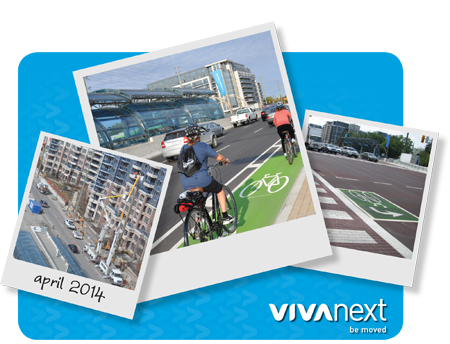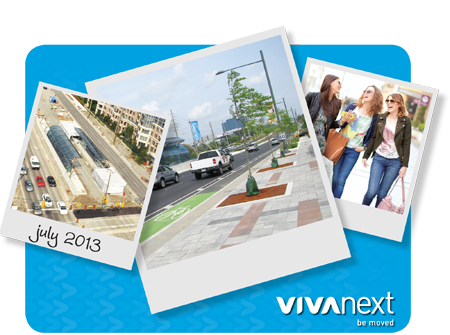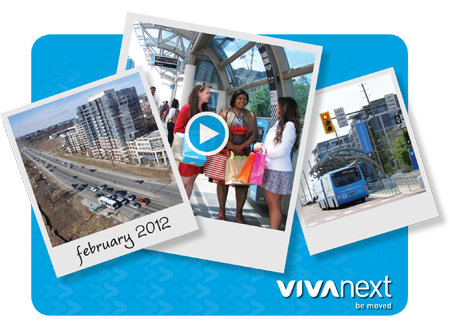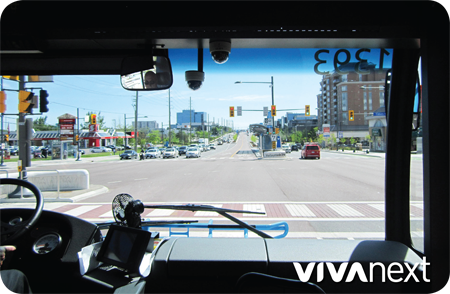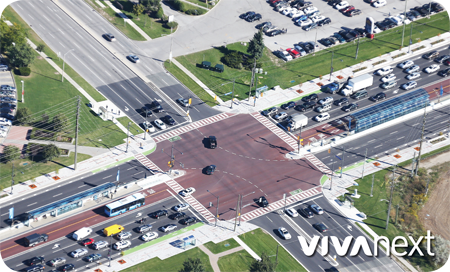Over the next three years, the vivaNext system is really going to transform the look and feel of York Region’s Centres and Corridors, with new rapidways opening for service. And these new transit options are only the beginning of an expanding vivaNext network that’s being built for York Region commuters.
Here’s the rundown on what’s planned, and how your transit choices are going to be widened over the next few years as vivaNext continues to expand.
Rapidway projects are being built in the order that will create the most connectivity for the greatest number of people and get you past the worst traffic congestion. Check out the map to see how the phases are rolling out, and follow our colour-coding of projects:
The segments on Highway 7 East that are coloured green or orange are either in service or about to be. Construction is well underway along the yellow and purple segments on Davis Drive in Newmarket, and Highway 7 West in Vaughan. Davis Drive is scheduled to be in service by the end of 2015, and only a year later, Vaughan will have its first rapidway to meet up with the Toronto-York Spadina Subway Extension.
The design-build contract has been awarded for the pink segments on Yonge Street and designs are being finalized as crews begin preliminary work. In Newmarket, work requiring Yonge Street lane closures has been postponed until next year.
But that’s not all – look at the blue segments on the map. These segments are also all designed and funding is committed, with planning well underway for construction to start in 2015. The projects marked in blue include two rapidway segments on Highway 7 West, which will extend on either side of the VMC rapidway. When it’s complete in 2018 this whole section will run over 15 km from Pine Valley to Yonge Street. Another blue segment will extend the Highway 7 East rapidway in Markham from the existing Warden Station on Enterprise Boulevard, to Unionville GO Station.
Other projects that will eventually create a full network across the Region and connecting to other transit systems are grey on the map. Since we don’t have funding secured for all of them yet, we can’t confirm the actual timing.
Of these unfunded segments, two are the top priority. The first priority is the Yonge North Subway Extension, which will provide a critical link for passengers transferring between the vivaNext system and the TTC. Without this connection, vivaNext is missing a critical link that will really make our system a key part of the larger Greater Toronto transit network.
Another future route proposed is a rapidway along Major Mackenzie Drive, which would provide a major transit artery for all the growth taking place in that area. The Major Mackenzie rapidway would provide passengers with connections to the TYSSE, GO lines in both the east and west, and the Viva Highway 7 rapidway in both the east and west.
Imagine how this wonderful rapid transit network would make your life easier? We are working hard to bring it to life, so that everyone in York Region will have the choice to leave their car at home and hop on board Viva for a fast, reliable and comfortable ride, no matter where they want to go.



